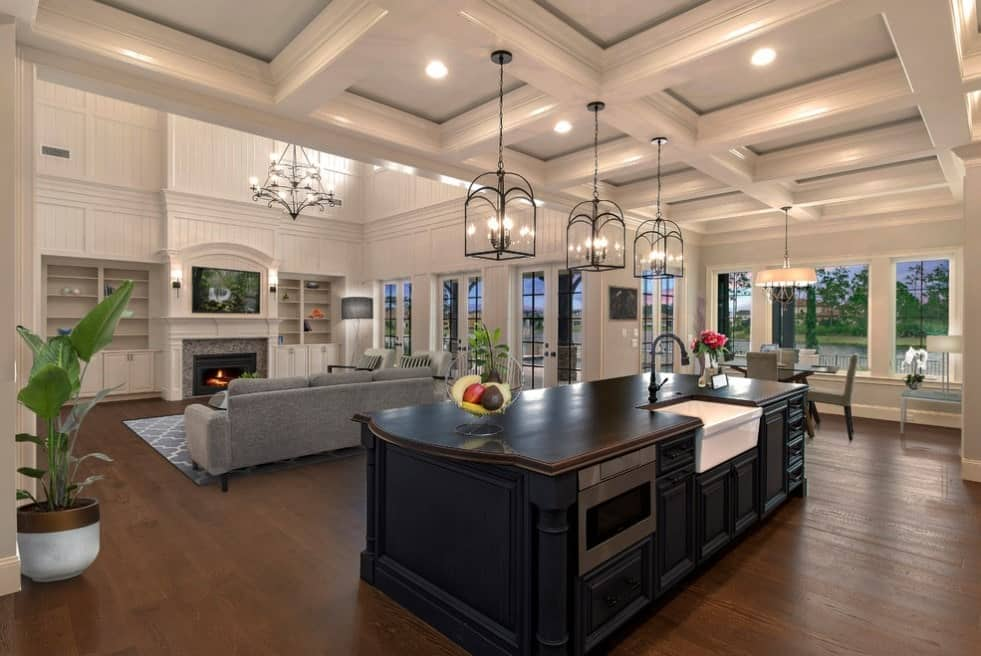Are you looking to add a touch of luxury and sophistication to your kitchen? Consider installing a coffered ceiling! In this guide, we’ll explore everything you need to know about coffered ceiling in kitchen spaces, from their benefits to design ideas and installation tips.

Understanding Coffered Ceilings in Kitchen Design
A coffered ceiling is a series of recessed panels or beams arranged in a grid pattern on the ceiling. This architectural feature adds depth, dimension, and visual interest to the space while evoking a sense of elegance and grandeur. In kitchen design, coffered ceilings serve as a focal point, enhancing the overall aesthetic appeal of the room.
Benefits of Coffered Ceilings in Kitchen Spaces
- Enhanced Visual Appeal: Coffered ceilings add architectural interest and sophistication to the kitchen, elevating its overall design aesthetic.
- Increased Ceiling Height Perception: The recessed panels of a coffered ceiling create the illusion of a higher ceiling, making the kitchen feel more spacious and open.
- Improved Acoustic Performance: Coffered ceilings can help absorb sound and reduce noise levels in the kitchen, creating a more pleasant and comfortable environment for cooking and dining.
- Versatile Design Options: With a variety of materials, finishes, and configurations available, coffered ceilings offer endless design possibilities to suit any kitchen style, from traditional to modern.
Read too: Exploring Craftsman Style Ceiling Fans for Your Home: Embracing Timeless Elegance
Incorporating Coffered Ceilings Into Your Kitchen Design
- Choose the Right Style: Select a coffered ceiling style that complements the overall design theme of your kitchen. Traditional kitchens may benefit from classic coffered designs with intricate molding details, while modern kitchens may opt for sleek and minimalist coffered patterns.
- Consider Scale and Proportion: Ensure that the scale and proportion of the coffered ceiling are appropriate for the size of your kitchen. Large kitchens may accommodate more elaborate and expansive coffered designs, while smaller kitchens may benefit from simpler and more understated patterns.
- Select Quality Materials: Invest in high-quality materials for your coffered ceiling to ensure durability and longevity. Options include wood, MDF (medium-density fiberboard), plaster, and lightweight polyurethane foam.
- Work with a Professional: For optimal results, enlist the services of a qualified contractor or carpenter experienced in coffered ceiling installation. They can help you navigate the design process, recommend suitable materials, and ensure proper installation for a flawless finish.
Conclusion
Coffered ceilings are a timeless architectural feature that can enhance the beauty and elegance of any kitchen space. Whether you’re renovating an existing kitchen or building a new one, consider incorporating a coffered ceiling to add depth, dimension, and sophistication to your design.